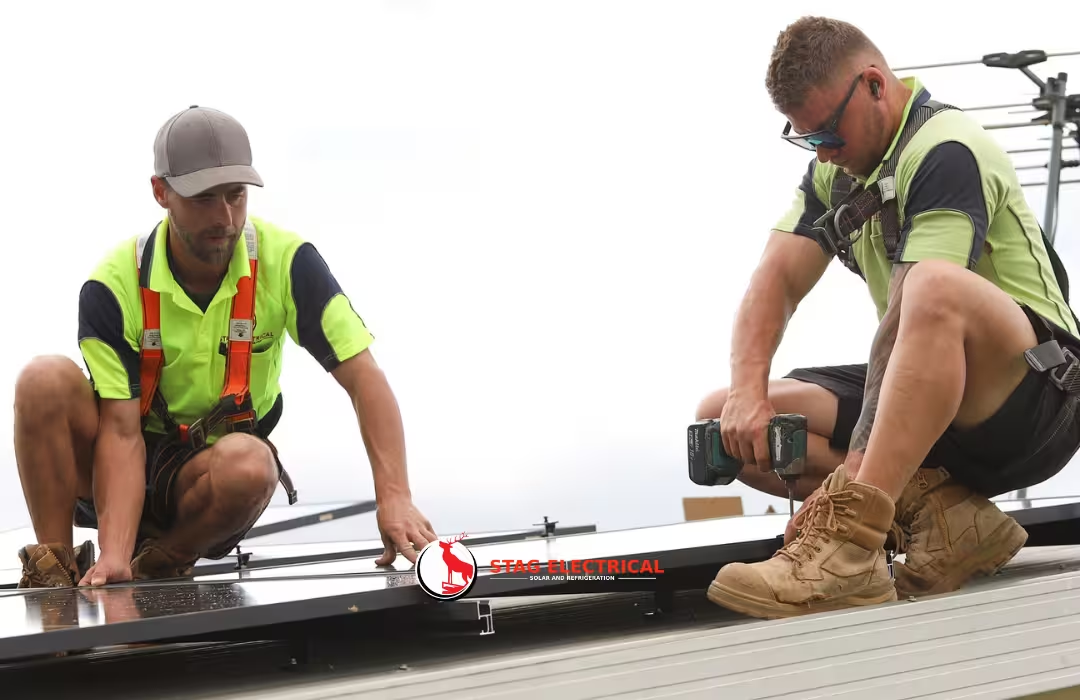State-by-state differences in savings (2025 estimates)
How much you save depends heavily on where you live. Different electricity rates, sunshine levels, and government incentives create wide variations.
Here’s a summary of estimated annual household savings from solar-only systems (no battery) across Australian states in 2025:
*These ranges are generalised for a typical 6.6kW solar system. Actual results depend on your roof, energy usage, tariff, and system design.
Even without storage, solar in most states can deliver four-figure savings each year.
The Cost of Installing Solar Panels (and Batteries)
Of course, savings only make sense when you compare them to the upfront cost.
As of 2025, typical installation costs in Australia are:
- 6.6 kW solar system: A$4,000 – A$8,000 (after federal STC rebate)
- 10 kW solar system: A$8,000 – A$12,000 (after rebate)
- Battery systems:
- 10 kWh battery: A$10,000 – A$13,000 (installed)
- 13–15 kWh battery: A$13,000 – A$17,000 (installed)
Costs vary based on brand, installer quality, roof type, and whether you bundle solar + storage together.
Government rebates (like state battery subsidies and the federal solar rebate) can lower these upfront prices. In some cases, finance or “solar loans” allow households to pay off systems with savings instead of upfront cash.
Adding battery storage: how much more can you gain?
A battery doesn’t create more energy—it shifts when you can use your solar. This allows you to avoid buying expensive evening electricity instead of exporting excess power at low feed-in rates.
Example scenario (solar only vs solar + battery)
Let’s assume:
- A 6.6 kW solar system producing ~8,000 kWh/year
- Retail electricity rate: A$0.35 / kWh
- Feed-in credit: A$0.06 / kWh
- Without battery, you self-consume ~40% (~3,200 kWh) and export ~4,800 kWh
Solar only savings:
- Self-consumed: 3,200 × $0.35 = A$1,120 avoided purchases
- Exported: 4,800 × $0.06 = A$288
- Total ≈ A$1,400 per year
Adding a 10 kWh battery (90% efficiency):
- Extra solar shifted from export to self-use: ~1,800 kWh
- Extra benefit: (1,800 × $0.35) – (1,800 × $0.06) ≈ A$522
- New total savings ≈ A$1,922 per year
What drives your results
The value of a solar battery depends on several key factors:
- Electricity price vs feed-in credit: The bigger the gap between what you pay for power and what you earn from exports, the more value your battery provides by storing excess solar for self-use.
- When you use power: Households that consume most of their energy in the evening or overnight benefit most, as stored solar offsets high peak-hour rates.
- Battery cost: Lower upfront costs and longer battery lifespans improve your overall return on investment.
- Federal Cheaper Home Batteries Program: This major national initiative launched in 2025 offers up to 30% off the upfront cost of approved home batteries. The program aims to support around 100,000 installations nationwide, with means-tested eligibility and a focus on accelerating the shift to renewable energy. While NSW-specific battery rebates have ended, ACT residents may still access additional local incentives, making storage even more affordable for some households.
- Tariff structure: Homes on time-of-use or demand tariffs see greater value from battery storage, as it allows them to avoid buying expensive peak electricity.
- Curtailment & export limits: A battery can store excess solar energy that would otherwise be lost due to export caps, increasing your system’s total usable output.
- Virtual Power Plants (VPPs): Some retailers and aggregators offer participation programs that pay households for contributing stored energy back to the grid, helping offset battery costs even further.
Realistic ranges for 2025
Based on current NSW and ACT energy rates and 6.6 kW system performance data:
- Solar only (no battery): Around A$1,200 – A$1,500 per year in savings.
- Solar + battery: Adds an extra A$400 – A$500 per year, depending on your usage pattern, battery size, and tariff type.
- Total potential benefit: Roughly A$1,600 – A$2,000+ per year in combined solar and battery value.
These figures are based on verified benchmarks for 2025 and assume average household consumption, standard feed-in tariffs (around 6 ¢/kWh), and current retail energy rates in NSW and ACT. Actual results vary depending on your home’s energy use, battery capacity, and system design.
What to watch out for
- Don’t assume your battery will always be fully used—your actual load profile matters.
- Check battery warranty and cycle guarantees (performance degrades over time).
- Compare actual quotes, not just “headline” pricing.
- Be cautious with VPP offers — but remember, you’re in control.
While some Virtual Power Plant (VPP) programs use your battery to export power during high-demand periods, most modern systems let you decide how much of your battery to reserve for backup or personal use.
For example, if you have a 20 kWh battery, you can easily set 10 kWh as a reserve to ensure you’re covered during blackouts or for self-sufficiency.
Retailers like Amber Energy offer wholesale-linked VPP models that can boost returns by trading energy at real-time prices — but it’s important to configure your reserve settings properly so you maintain the level of backup power you need.
- Reassess if you plan to add EVs, heating, or new major appliances in the future.
Solar already delivers excellent returns across Australia. Adding a battery unlocks extra savings and independence, especially for households with high evening usage, expensive tariffs, or access to battery rebates.
If you’re considering solar + storage, the smartest move is to base your decision on your actual energy data—not averages. At Stag Electrical, we design systems tailored to your consumption patterns, help you access incentives, and set you up with long-term monitoring so your investment pays back as fast as possible.



